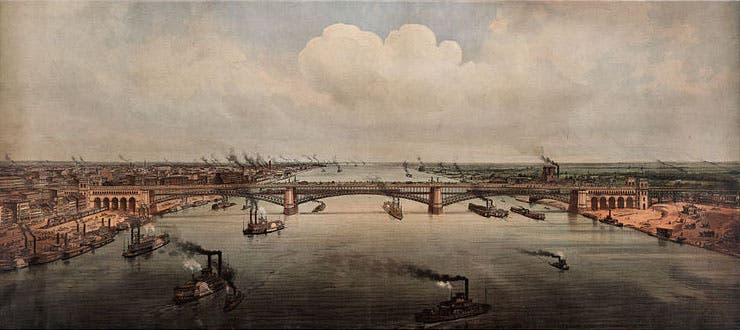Scientist of the Day - James Buchanan Eads
James Buchanan Eads, an American engineer, was born May 23, 1820. Eads designed and built the St. Louis Bridge over the Mississippi River, erected between 1867 and 1874. The bridge was the first in this country to use arches made of cast steel. So that the river could remain navigable, the arches were supported during construction by cantilevers above, instead of scaffolding below. We see here two images of the arches under construction (first and second images)
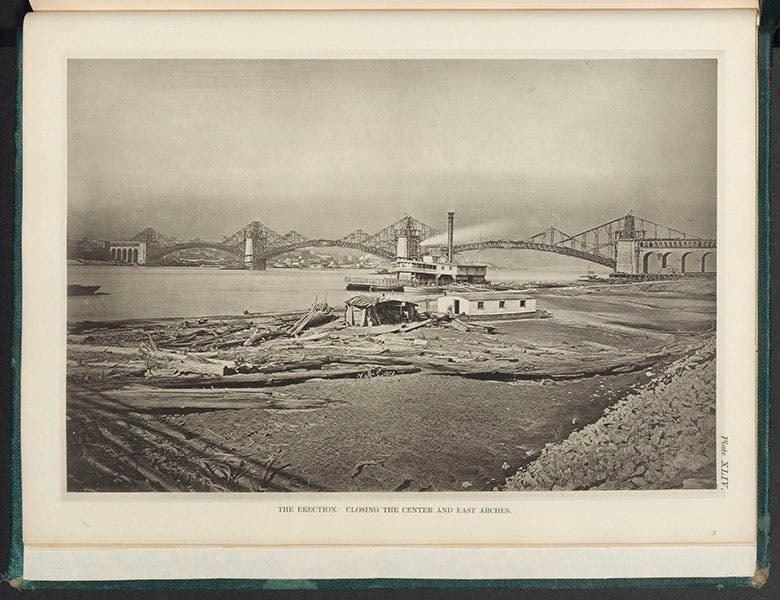
Closing the center and east arches, from C.M. Woodward, History of the Saint Louis Bridge, 1881 (Linda Hall Library)
The most novel feature of the bridge construction was the building of the piers. Bedrock lay up to 100 feet below the river surface. Instead of building a cofferdam and pumping the water out, Eads used a caisson. The caisson was pressurized and open at the bottom, so that the river mud could be dug out and pumped to the surface. As the caisson slowly descended, a pier was built up on top of the caisson, so that by the time the caisson reached bedrock, the pier was already at river level and could easily be built up to roadway level. We show the entire east pier (third image) and a detail of the caisson below (fourth image).

The east pier and caisson below, from C.M. Woodward, History of the Saint Louis Bridge, 1881 (Linda Hall Library)
The only problem with caissons was that no one knew about the "bends", since no one had ever gone this deep with a caisson, and many of the workmen died or suffered permanent disability until it was realized that a slower ascent would prevent the problem.
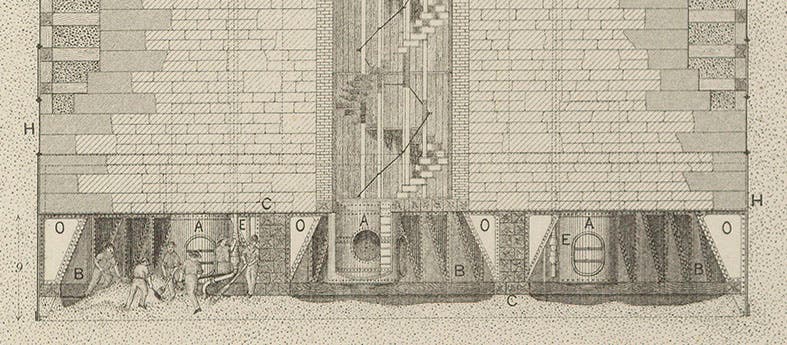
Detail of previous image, showing just the caisson below the pier, from C.M. Woodward, History of the Saint Louis Bridge, 1881 (Linda Hall Library)
For our 2002 exhibition, Centuries of Civil Engineering, we displayed an 1873 issue of Scientific American that showed the erection of the arches, and an 1871 issue of Engineering, which depicted a cross-section of the caisson and pier. For this occasion, we drew our images from a splendid book in our collections, The History of the Saint Louis Bridge (1881), by Calvin M. Woodward. In addition to providing the images above, it includes a picturesque diagram of the center section, revealing that the bridge carried horse and pedestrian traffic on the upper level, with a railway below (fifth image).
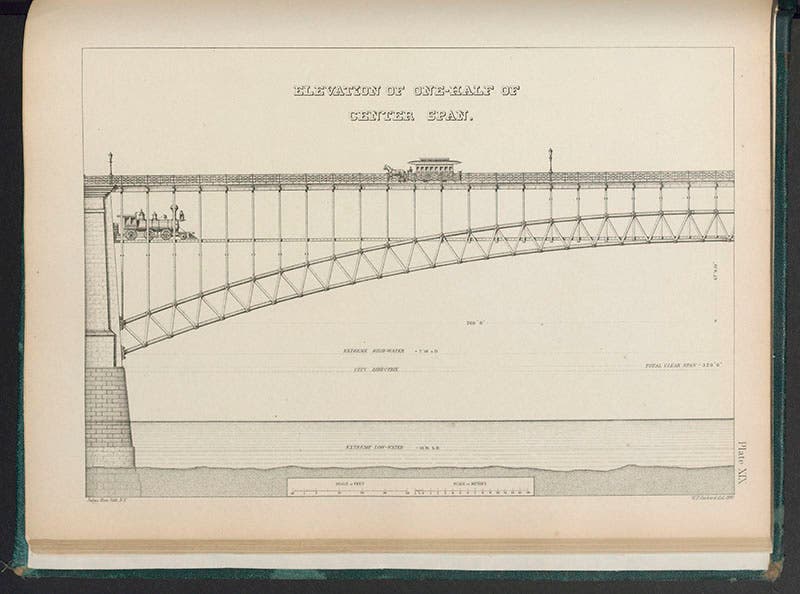
Diagram of one-half of the center span, with carriage above and a train below, from C.M. Woodward, History of the Saint Louis Bridge, 1881 (Linda Hall Library)
Woodward also provided a lovely heliotype portrait of Eads (sixth image).
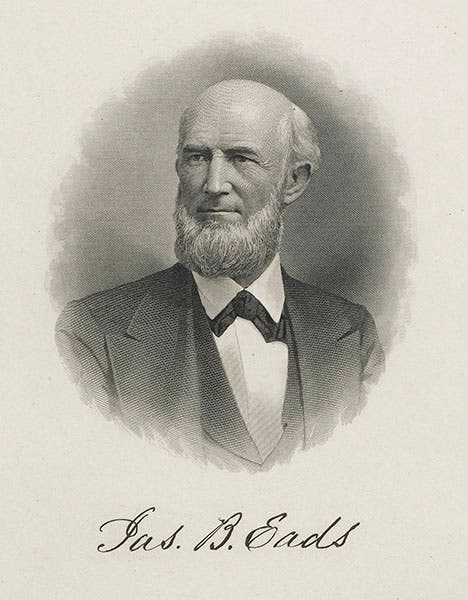
Portrait of James Buchanan Eads, heliotype, from C.M. Woodward, History of the Saint Louis Bridge, 1881 (Linda Hall Library)
The Eads Bridge, as it is now called, was opened for rail and carriage traffic on July 4, 1874, and it still carries traffic today; it is, we believe, the only major bridge in this country that is named after its designer. Although there is a diagram of the entire bridge in Woodward’s book, we prefect this excerpt from a colorful poster published in 1874, upon the completion of the bridge (seventh image).
Dr. William B. Ashworth, Jr., Consultant for the History of Science, Linda Hall Library and Associate Professor, Department of History, University of Missouri-Kansas City. Comments or corrections are welcome; please direct to ashworthw@umkc.edu.


